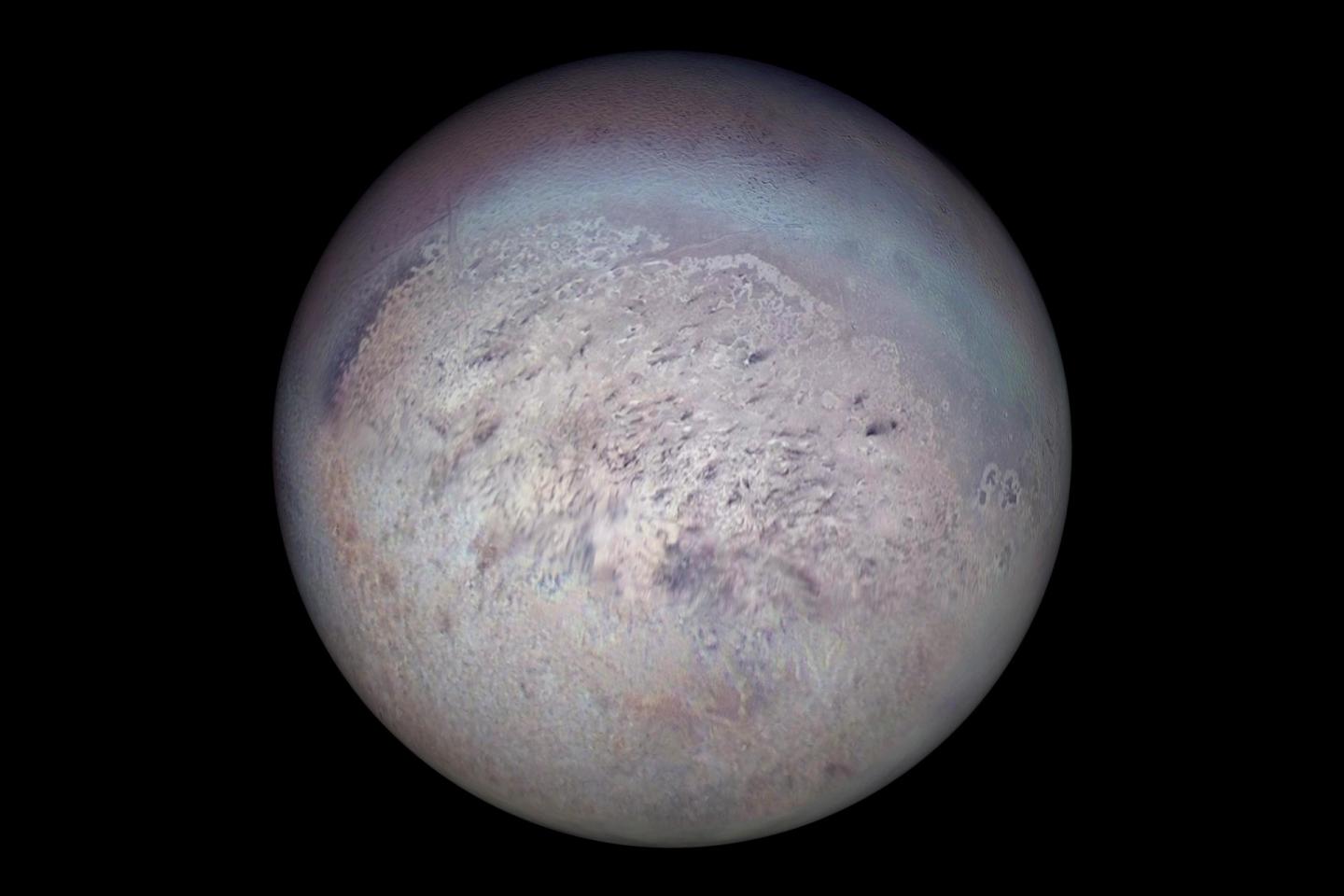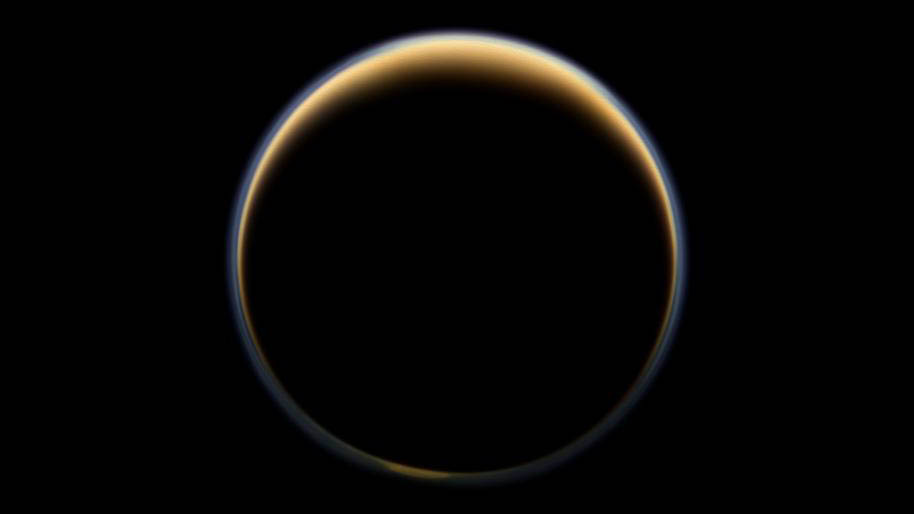Pluto's atmosphere gets its blue haze from icy organic compounds, study suggests

The haze shrouding Pluto might be made up of ice crystals possessing cyanide hearts, a new study finds.
Hazes, which are made of tiny motes of dust, smoke, ice and other substances, are not unique to Earth — scientists have detected hazes enveloping Mars, Venus, Saturn and Jupiter.
Nor are hazes limited to planets. Saturn's largest moon Titan, the only moon known to have clouds, is cloaked in a thick orange haze similar in makeup to smog on Earth. NASA's Voyager 2 spacecraft also detected haze in the atmosphere of Neptune's largest moon Triton.
Related: Pluto and Titan are surprisingly hazy, but scientists are fuzzy on exactly why
NASA's New Horizons mission, which flew by Pluto in 2015, unexpectedly revealed Pluto also possesses haze hugging the dwarf planet's frozen surface. Since Pluto, Titan and Triton are all icy worlds with atmospheres rich in nitrogen, methane and carbon monoxide, researchers had thought they might all possess similar kinds of hazes.
Previous research found Titan's haze was the result of solar ultraviolet rays triggering chemical reactions in the icy moon's upper atmosphere. These created simple organic compounds that went on to help form ever larger and more complex organic molecules.
However, scientists now find the hazes on Pluto and Triton might have significantly different origins than Titan's.
Breaking space news, the latest updates on rocket launches, skywatching events and more!
"Although Titan and Pluto seem very similar, their haze properties can be drastically different," study lead author, Panayotis Lavvas, a planetary scientist at the University of Reims Champagne-Ardenne in Reims, France, told Space.com.
When the researchers analyzed computer models of haze formation, they discovered that if the same chemical reactions at work on Titan happened on Pluto, they could only create about half the haze particles that prior work detected on the dwarf planet. (Since Pluto's atmosphere is roughly 175 degrees Fahrenheit, or 80 degrees Celsius, colder than Titan's, its atmospheric chemistry runs slower.)
In the new study, Lavvas and his colleagues suggest that as on Titan, sunlight triggers chemical reactions in Pluto's upper atmosphere, forming simple compounds such as hydrogen cyanide, a molecule made up of one hydrogen, one carbon and one nitrogen atom. Their models suggested hydrogen cyanide might freeze to produce tiny ice particles.
As these microscopic ice particles settle downward due to gravity, other gases condense around these seeds to coat them. As such, haze particles on Pluto may be largely made of a variety of ices, instead of more complex organic compounds as on Titan. The sizes, amounts and atmospheric distributions of these ice grains in the computer models closely match those of the haze particles detected on Pluto, the scientists noted.
In addition, these ice particles on Pluto should interact less with incoming solar energy than haze particles on Titan, the researchers said. As such, they should play a smaller role in controlling heat in Pluto's atmosphere than previously thought, Lavvas said.
When it comes to Triton, since it possesses an even colder atmosphere than Pluto's, the scientists noted its hazes should prove even icier.
"This comparison of Titan, Pluto and Triton illuminates the important differences in the mechanisms of haze formation in planetary atmospheres," Lavvas said.
The scientists detailed their findings online Dec. 21 in the journal Nature Astronomy.
Follow Charles Q. Choi on Twitter @cqchoi. Follow us on Twitter @Spacedotcom and on Facebook.

Charles Q. Choi is a contributing writer for Space.com and Live Science. He covers all things human origins and astronomy as well as physics, animals and general science topics. Charles has a Master of Arts degree from the University of Missouri-Columbia, School of Journalism and a Bachelor of Arts degree from the University of South Florida. Charles has visited every continent on Earth, drinking rancid yak butter tea in Lhasa, snorkeling with sea lions in the Galapagos and even climbing an iceberg in Antarctica. Visit him at http://www.sciwriter.us


